LOWER MANHATTAN AND CAPTIVATING CHELSEA
On July 26, 2013 we traveled through lower Manhattan, we passed the Woolworth Building, which is celebrating its 100th anniversary this year, on our way to meet our tour guide Deidre La Porte at City Hall. I had never been to City Hall, but immediately upon seeing this magnificent building I was able to recognize it as a federal style building. The grounds are massive and afford one the view of the Brooklyn Bridge which I recently crossed over and the Woolworth building standing in all its magnificence. I could feel how one may envision their power by merely walking through the grounds.
On July 26, 2013 we traveled through lower Manhattan, we passed the Woolworth Building, which is celebrating its 100th anniversary this year, on our way to meet our tour guide Deidre La Porte at City Hall. I had never been to City Hall, but immediately upon seeing this magnificent building I was able to recognize it as a federal style building. The grounds are massive and afford one the view of the Brooklyn Bridge which I recently crossed over and the Woolworth building standing in all its magnificence. I could feel how one may envision their power by merely walking through the grounds.
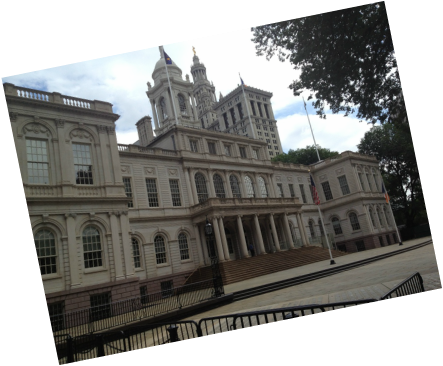


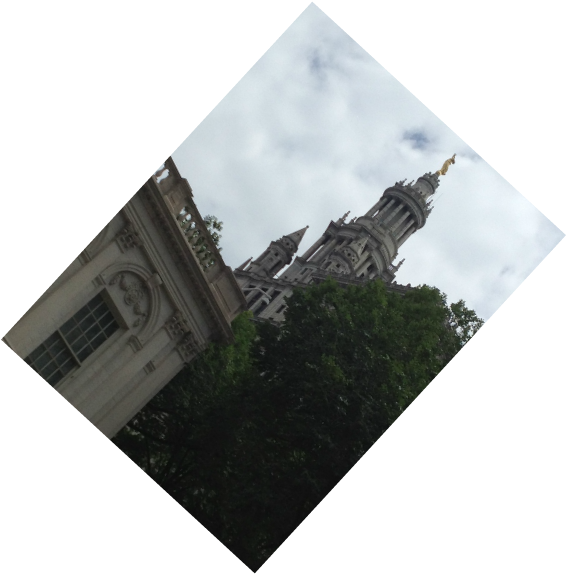
City Hall was originally called Town Hall, built at 73 Pearl Street where Federal Hall stands today. That is the location of the second Town Hall and George Washington’s inauguration. Upon entering City Hall for the first time, the authority the building projects is immediately felt.
Thomas Jefferson, detested cities and following George Washington’s inauguration petitioned to move the capital to Pennsylvania. Eventually, New York State’s capital was relocated to Albany.
The city was growing rapidly with immigration: in 1790 the census reported 31,000 people in the area. By 1800, there were 61,000 people and in 1810, 90,000 people were reported by the United States Census as living in the city.
City Hall as it is known today was built from 1803-1815/16. The architects were chosen by the results of a competition with a prize of $350.00 (Blue Guide, p.84). The winners were Joseph Francois Mangin, a French immigrant and John McComb Jr., a native to New York. Winning this was considered to be quite an honor. Mangin’s name was somehow erased and McComb received credit for the design for many years until it was realized that Mangin’s name was missing. In 1812, before the completion of the building, people began to take residence in City Hall. The building housed the Mayor, City Watch and Common Council, courts, prisons and wine cellars. Eventually the prisons where relocated due to increased population.
The caretaker’s cottage was built the same time as City Hall for one to watch for fires, as electricity was not installed until 1899. On the very top of the building there is a statue without a blindfold representing justice. The statue was built using sheet metal and painted to look like stone: just as the Statue of Liberty was built of sheet metal and left to turn to green. Originally, the statue was carved of wood. City Hall was built here on these grounds because this is where the population was concentrated. The building’s front was marble and the back was sandstone. The material was replaced in 1954 with limestone and granite; this was the first time City Hall had four matching sides.
When first entering City Hall, brilliant Roman arches immediately attract the eye. Next you are attracted to the chandelier, which offers a touch of naturalistic nature. Inside, the building portrays the original marble and is seen as a duel floating staircase. There is a dome in the center that is entirely encased within the building. The dome cannot be seen from the outside as it encases the entire three floors from the inside.
The walk up the floating staircase, which is attached to the ceiling to the Governor’s room, gives one a sense of entitlement. The Governor’s room houses the most important and notable portraits you can find gracing the walls. Notably, you will observe: George Washington 1732-1799; John Jay 1795-1801, Daniel Thompkins 1774-1828, Morgan Lewis 1754-1844 and George Clinton 1739-1812. George Washington’s original desk can also be seen here.
Thomas Jefferson, detested cities and following George Washington’s inauguration petitioned to move the capital to Pennsylvania. Eventually, New York State’s capital was relocated to Albany.
The city was growing rapidly with immigration: in 1790 the census reported 31,000 people in the area. By 1800, there were 61,000 people and in 1810, 90,000 people were reported by the United States Census as living in the city.
City Hall as it is known today was built from 1803-1815/16. The architects were chosen by the results of a competition with a prize of $350.00 (Blue Guide, p.84). The winners were Joseph Francois Mangin, a French immigrant and John McComb Jr., a native to New York. Winning this was considered to be quite an honor. Mangin’s name was somehow erased and McComb received credit for the design for many years until it was realized that Mangin’s name was missing. In 1812, before the completion of the building, people began to take residence in City Hall. The building housed the Mayor, City Watch and Common Council, courts, prisons and wine cellars. Eventually the prisons where relocated due to increased population.
The caretaker’s cottage was built the same time as City Hall for one to watch for fires, as electricity was not installed until 1899. On the very top of the building there is a statue without a blindfold representing justice. The statue was built using sheet metal and painted to look like stone: just as the Statue of Liberty was built of sheet metal and left to turn to green. Originally, the statue was carved of wood. City Hall was built here on these grounds because this is where the population was concentrated. The building’s front was marble and the back was sandstone. The material was replaced in 1954 with limestone and granite; this was the first time City Hall had four matching sides.
When first entering City Hall, brilliant Roman arches immediately attract the eye. Next you are attracted to the chandelier, which offers a touch of naturalistic nature. Inside, the building portrays the original marble and is seen as a duel floating staircase. There is a dome in the center that is entirely encased within the building. The dome cannot be seen from the outside as it encases the entire three floors from the inside.
The walk up the floating staircase, which is attached to the ceiling to the Governor’s room, gives one a sense of entitlement. The Governor’s room houses the most important and notable portraits you can find gracing the walls. Notably, you will observe: George Washington 1732-1799; John Jay 1795-1801, Daniel Thompkins 1774-1828, Morgan Lewis 1754-1844 and George Clinton 1739-1812. George Washington’s original desk can also be seen here.
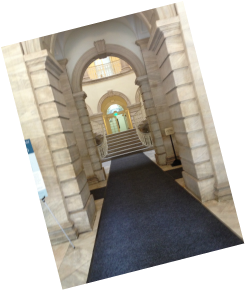


 Notice the flowery natural pattern
Notice the flowery natural pattern 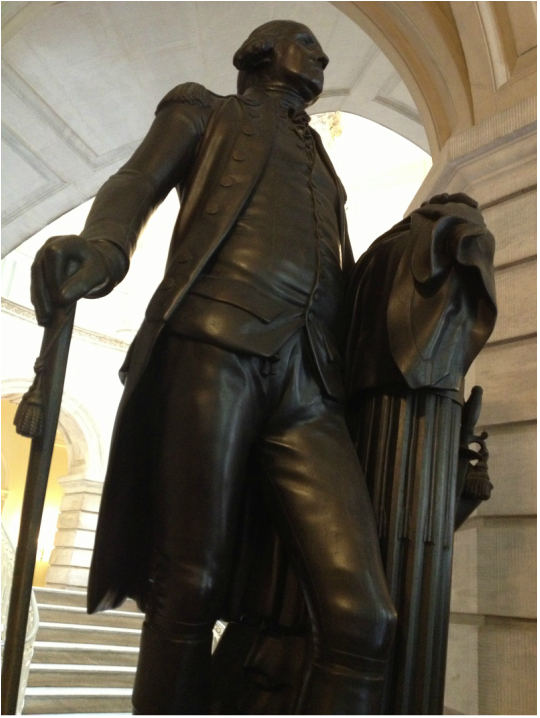 George Washington : life size
George Washington : life size 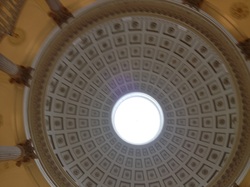
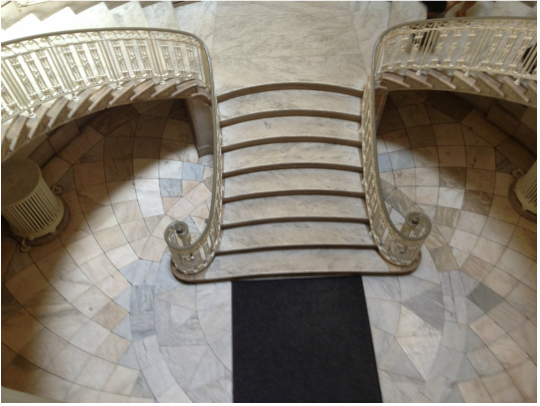
City Hall Chamber runs adjacent to the governor’s room, at one time this massive room was home to two different courts. John Dunkin was the architect commissioned for this change over in 1897. The mural on the ceiling, an allegorical painting (expression of meanings and generalization about human existence) is known as New York the Eastern Gateway. The corners of the ceiling have the city seal engraved into them and famous sayings. One of the corners quotes Abraham Lincoln, “A government of the people by the people and for the people”. The Chamber offers seats to the congressmen of each borough: 16 seats to Brooklyn, 14 to Manhattan, 10 to the Bronx, 8 to Queens and 3 to Staten Island.
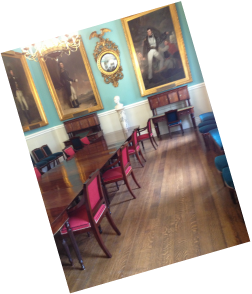
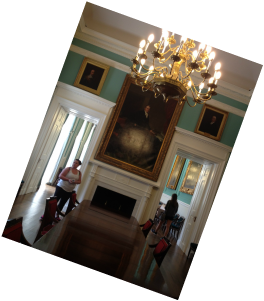

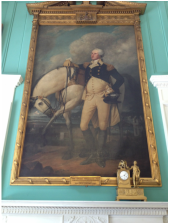




Time moves quickly in the New York Gothic Experience class, we left City Hall’s quiet powerful environment and returned to the hustle and bustle of city life. Passing through St. Paul’s Chapel, where President George Washington attended services and the 9/11 rescuers found refuge: our next stop would be Freedom Towers.
The Freedom Towers are the direct result of the September 11, 2001 terrorist attack. This is a memorial site for both the 2,983 men and woman who perished on that dreadful day as well as the lives lost on the February, 26 1993 terrorist attack in the North Tower, where a truck bomb killed six people and injured in excess of 1000 people.
The Twin Towers, also known as the World Trade Center was made up of seven buildings, an underground mall and a plaza. On February 26th Islamists planted explosives in the garage and on September 11th Islamists flew two planes, one into each tower destroying the entire complex and killing thousands.
The towers were greater than 1300 feet tall, both had 110 floors. The towers would attract thousands of visitors and commuters to its site each day: the complex was so large it even had its own zip code, 10048. Before the attack on 9/11, eight postal workers were assigned to the towers alone. After the attacks over 80,000 pieces of mail continued to arrive at the address and were processed at the James A. Farley General Post Office, located across from Penn Station. The Post Office separated and held the mail or forwarded it without charge for three years. Normally, mail is only held for one year. Today approximately 300 pieces of mail arrive at the address daily; this is mostly bulk mail from senders who have not yet updated their lists.
The 9/11 Memorial opened on the tenth anniversary of the attacks. It includes a North pool and a South pool, respectively named for the North Tower and South Tower. The pools are the exact footprint of the buildings, meaning this is the exact spot where the towers stood. The pool consists of a thirty foot drop of cascading water into a void where there is no end. The names of the dead are engraved in the continuous bronze railing that runs around the pool, giving loved ones an open area to grieve. The names are placed in a meaningful reflection of relationships they shared with others on that fateful day and are also placed according to the family’s requests.
The park is surrounded by eleven foot oak trees and one Pear Tree. The pear tree was originally planted at the World Trade Center’s plaza in the 1970s and was found amongst the rubble of the 9/11 attack. The tree was nursed back to health and planted at the World Trade Center site in 2010. The tree represents survival, promotes strength and healing and helps us move forward with our lives.
The Freedom Towers are the direct result of the September 11, 2001 terrorist attack. This is a memorial site for both the 2,983 men and woman who perished on that dreadful day as well as the lives lost on the February, 26 1993 terrorist attack in the North Tower, where a truck bomb killed six people and injured in excess of 1000 people.
The Twin Towers, also known as the World Trade Center was made up of seven buildings, an underground mall and a plaza. On February 26th Islamists planted explosives in the garage and on September 11th Islamists flew two planes, one into each tower destroying the entire complex and killing thousands.
The towers were greater than 1300 feet tall, both had 110 floors. The towers would attract thousands of visitors and commuters to its site each day: the complex was so large it even had its own zip code, 10048. Before the attack on 9/11, eight postal workers were assigned to the towers alone. After the attacks over 80,000 pieces of mail continued to arrive at the address and were processed at the James A. Farley General Post Office, located across from Penn Station. The Post Office separated and held the mail or forwarded it without charge for three years. Normally, mail is only held for one year. Today approximately 300 pieces of mail arrive at the address daily; this is mostly bulk mail from senders who have not yet updated their lists.
The 9/11 Memorial opened on the tenth anniversary of the attacks. It includes a North pool and a South pool, respectively named for the North Tower and South Tower. The pools are the exact footprint of the buildings, meaning this is the exact spot where the towers stood. The pool consists of a thirty foot drop of cascading water into a void where there is no end. The names of the dead are engraved in the continuous bronze railing that runs around the pool, giving loved ones an open area to grieve. The names are placed in a meaningful reflection of relationships they shared with others on that fateful day and are also placed according to the family’s requests.
The park is surrounded by eleven foot oak trees and one Pear Tree. The pear tree was originally planted at the World Trade Center’s plaza in the 1970s and was found amongst the rubble of the 9/11 attack. The tree was nursed back to health and planted at the World Trade Center site in 2010. The tree represents survival, promotes strength and healing and helps us move forward with our lives.

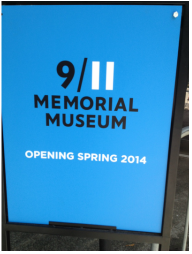
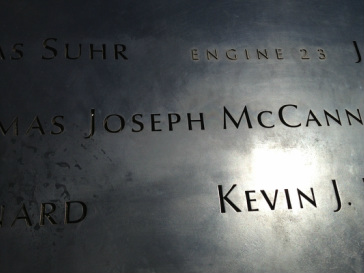
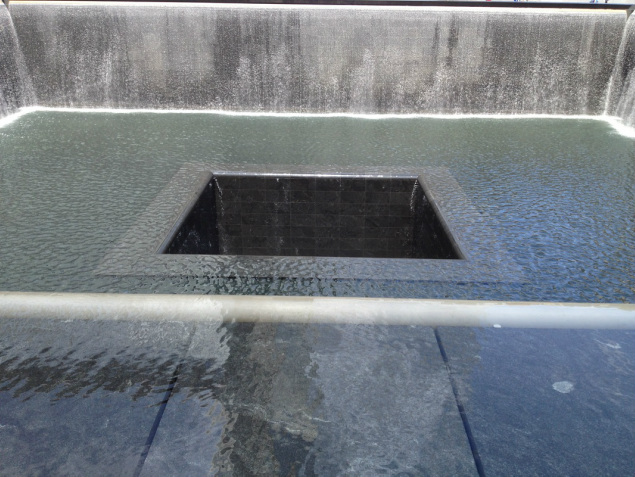
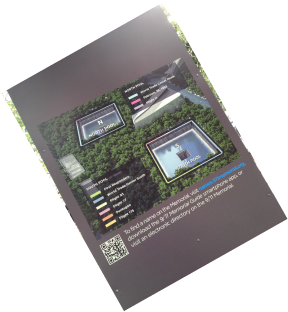
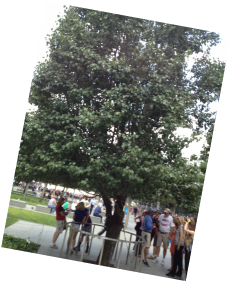
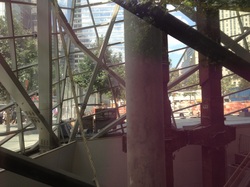 Inside look at museum to open in 2014
Inside look at museum to open in 2014 We left the 9/11 Memorial and started making our way towards Chelsea. While passing through Wall Street, we stopped at Federal Hall. This is, as mentioned earlier the site of the city’s first Town Hall and the place where George Washington was sworn into office. Federal Hall served as the nation’s first capital, eventually moving to Washington DC, it is also the site where the United State’s Bill of Rights was first introduced to congress. John Peter Zenger’s memory lives on in Federal Hall, portraying freedom of the press. John Zenger wrote the New Weekly Journal and voiced his criticism of Governor William Cosby. Cosby had Zenger arrested and Andrew Hamilton defended him. The jury failed to find Zenger guilty, in 1735 the Attorney General charged Zenger with libel. Today, the machinery used to roll out the news in Zenger's day, remains in Federal Hall.
We continued on, passing Battery Park, a usually beautiful park is currently under construction and now closed to visitors. We walked up to Ninth Avenue and Hudson into the heart of Chelsea, also known as the meat packing district. The Blue Guide (p.185) states that Chelsea runs from the Hudson River to Sixth Avenue and West 14th – to the West 20’s, I thought Chelsea ran from Hudson to Eighth Avenue and from West 14th- West 25th Street. Chelsea received its name from a retired British soldier named Thomas Clarke. Clarke bought the land, naming it after a hospital in London being used for injured soldiers. Clarke’s grandson, Clement Clark Moore turned the land into residential housing. Clement was a classics professor, he published books ranging from agriculture to history. He is most famous for his poem “A Visit from Saint Nicholas” (Blue Guide, p. 185). The Hudson River Railroad was built in the mid 1800s bringing immigrants to the area as well as slaughterhouses and breweries.
During the 1970s – 1990s Chelsea was home to transvestites, drugs, prostitution, and sex shops; Chelsea has undergone much transformation since the 1980s. The Ninth Avenue El, known as the High Line, rolled out its last train in 1980. In 1999, Friends of the High Line who had successfully defended its demolition opened the first park starting at Gansevoort Street to West Twentieth Street. The High Line, which now reaches to West 34th Street, is a comfortable stroll with the city below offering plenty of relaxing places to sit, eat, shop and watch street theater.
We continued on, passing Battery Park, a usually beautiful park is currently under construction and now closed to visitors. We walked up to Ninth Avenue and Hudson into the heart of Chelsea, also known as the meat packing district. The Blue Guide (p.185) states that Chelsea runs from the Hudson River to Sixth Avenue and West 14th – to the West 20’s, I thought Chelsea ran from Hudson to Eighth Avenue and from West 14th- West 25th Street. Chelsea received its name from a retired British soldier named Thomas Clarke. Clarke bought the land, naming it after a hospital in London being used for injured soldiers. Clarke’s grandson, Clement Clark Moore turned the land into residential housing. Clement was a classics professor, he published books ranging from agriculture to history. He is most famous for his poem “A Visit from Saint Nicholas” (Blue Guide, p. 185). The Hudson River Railroad was built in the mid 1800s bringing immigrants to the area as well as slaughterhouses and breweries.
During the 1970s – 1990s Chelsea was home to transvestites, drugs, prostitution, and sex shops; Chelsea has undergone much transformation since the 1980s. The Ninth Avenue El, known as the High Line, rolled out its last train in 1980. In 1999, Friends of the High Line who had successfully defended its demolition opened the first park starting at Gansevoort Street to West Twentieth Street. The High Line, which now reaches to West 34th Street, is a comfortable stroll with the city below offering plenty of relaxing places to sit, eat, shop and watch street theater.
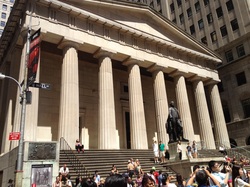
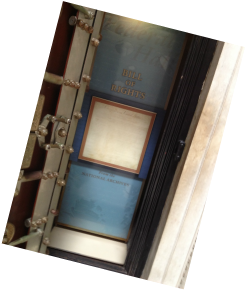


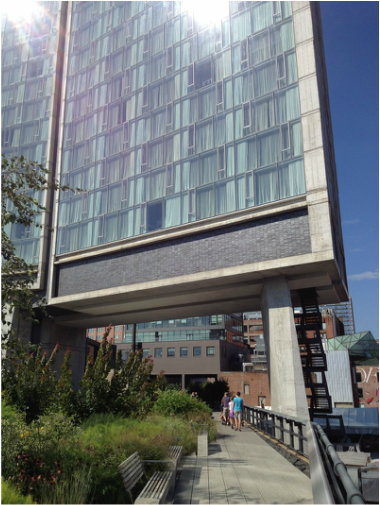 Standard Hotel: The beginning of the High LIne
Standard Hotel: The beginning of the High LIne 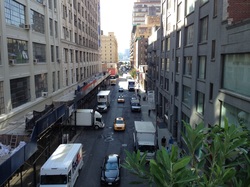
Chelsea is home to over 200 art galleries, we were able to get into a few of them. The first few galleries we entered were not of my taste, when we walked into Bruce Wolkowitz gallery things changed. The gallery is hosting a series of prints named Wrinkles of the City, Havana Cuba, the pieces are photographs of the faces of the elderly and their portraits posted on buildings. The piece that drew me to it was created by Alicia Adela Hernandez Fernandez 2012: it is a color print on metallic paper mounted on aluminum. The print shows a graffiti artist painting on a building wall with a face emerging from the brick with a passerby enthralled by it.
Andrea Rosen Gallery located at 525 West 24th Street is presenting Simon Fujiwara's first solo appearance in New York. The Andrea Rosen Gallery describes Fujiwara's pieces as an explanation of identity and sexuality blending fact and fiction into works of art that demand conversation.
Andrea Rosen Gallery located at 525 West 24th Street is presenting Simon Fujiwara's first solo appearance in New York. The Andrea Rosen Gallery describes Fujiwara's pieces as an explanation of identity and sexuality blending fact and fiction into works of art that demand conversation.
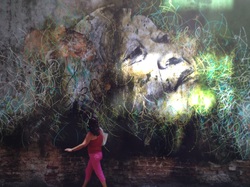
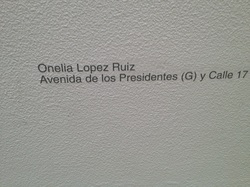
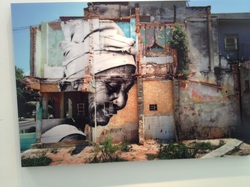
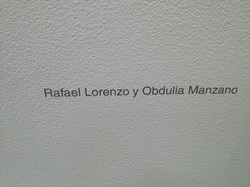

The piece being presented by the gallery is called Studio Pieta (King Kong Komplex). It debuted in March at Sharjah Biennial and now is being presented in New York. Fujiwara's original idea was to recreate a picture of his mother with her Lebanese boyfriend. Fujiwara was envious of his mother and felt an attraction to his mother’s boyfriend. The picture, upon initial view is that of a woman in a bikini and upon further inspection, the photo recreated is that of a man in a bikini holding his arms forward as if holding somebody. The second recreation shows the bikini clad man carrying another man in a trapeze under the back and knees. The third recreation shows the man in the trapeze alone.
I believe Fujiwara's pieces reflect an issue in his life ready to be confronted, Fugiwara is depicting how much he and his mother look alike, his jealousy that he is not a woman, and his attraction to men. This is a piece that pops out and forces conversation due to its controversial topic and its presentation.
I believe Fujiwara's pieces reflect an issue in his life ready to be confronted, Fugiwara is depicting how much he and his mother look alike, his jealousy that he is not a woman, and his attraction to men. This is a piece that pops out and forces conversation due to its controversial topic and its presentation.

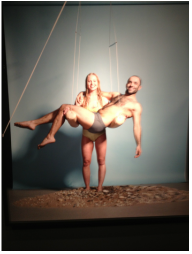

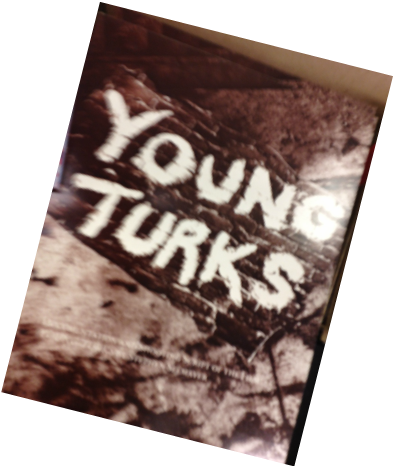
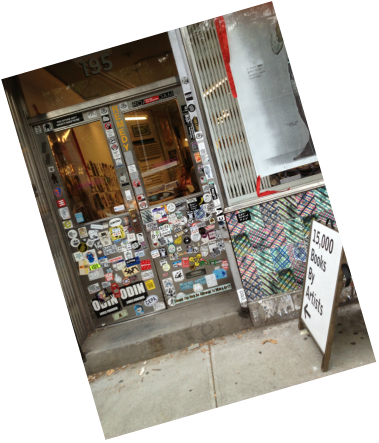
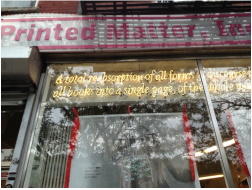
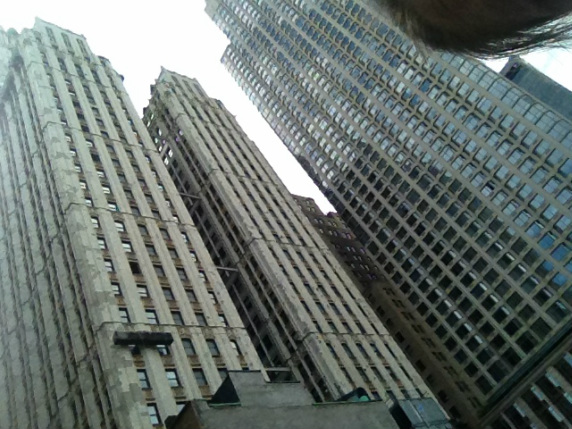
 RSS Feed
RSS Feed